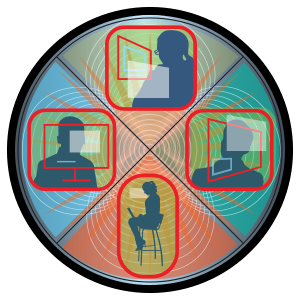
Learning and development (L&D), along with many business functions, has gone through a digital transformation. L&D professionals no longer see the learning management system (LMS) as the core element of its digital presence; rather, they’re starting to develop various online offerings that help employees develop when, where, and how they want. For digital learning to deliver on its promise, employees must be engaged and active learners; here we explore how to build solutions that encourage engagement for maximum benefits.
Digital learning: A solution that comes with its own challenges
According to a recent LinkedIn survey, in fact, the number-one challenge in talent development is “getting employees to make time for learning.” In fact, it’s a larger challenge than limited budgets, demonstrating return on investment (ROI), and the size of the L&D team.[1] The same survey found that 58 percent of employees prefer to learn at their own pace, and 49 percent prefer to learn at the point of need. Despite the fact that digital can meet those needs, we still struggle with engagement for a variety of reasons, one of them being the generally lukewarm impression of digital learning largely driven by experience among employees who have participated in compliance e-learning solutions.
Learning designers seek to address these challenges and adopt strategies from other digital media—such as gamification—to find something that works. By applying a popular behavior-change model to the context of digital learners in corporate settings, L&D professionals can better engage learners and serve their organizations.
Below we outline a few tips for creating digital learning solutions that work, all of which we explore in more detail in chapter nine of Elevating Learning and Development: Insights and Practical Guidance from the Field. These tips are rooted in behavioral psychology; we’ve drawn insights from the BJ Fogg’s Fogg Behavior Model.[2]
- Understand the role of behavior: To engage employees in learning, then, L&D professionals must understand themotivations, abilities, and triggers underlying their learners’ behavior. They can use this understanding to design digital-learning solutions that help learners build desired behaviors into habits.
- Consider learner motivation: To better understand the motivations behind learners’ decisions and actions, L&D professionals should conduct a thorough analysis of usage data on platforms and coursewareas well as data collected via interviews and surveys. For example, the data might show that disengaged learners don’t see the point of engaging in a certain program that is designed for long-term benefit rather than short-term performance support.
- Understand learner ability: A critical barrier for many learners—beyond time—is that formal digital learning is not part of their daily routine; they’re generally not in the habit of seeking out answers in digital courseware, or they may not know where to look for what they need. Furthermore, people’s perceptions of themselves may deter them from seeking out formal learning on a digital platform; they may feel, for example, they have all the knowledge they need to do their current job. Designing for learners’ abilities and tendencies will ensure you are prioritizing the user experience, making efficient use of time, and integrating easily into existing employee habits.
- Build triggers: Well-designed, persistent triggers can help turn a one-off behavior into a habit. In the learning context, triggers tend to involve strategic communications—for example, using software plug-ins to insert hyperlinks to relevant courseware into an employee’s workflow.
- Build habits: Before trying to influence employee behavior, L&D professionals need to consider some fundamental questions: What do they need their audience to do? What habits does the audience need to form? What habits can L&D build off of? What isworking, and how can L&D do more of it?
Learning and development is crucial in today’s business world, and digital programming offers myriad benefits for busy professionals. But to realize the benefits, L&D must look beyond the digital-learning approaches to which it is accustomed and use insights from behavioral psychology to build learning strategies and customizable platforms for the workforce of the future.
[1]2018 Workforce learning report: The rise and responsibility of talent development in the new labor market, LinkedIn Learning, 2018, learning.linkedin.com.
[2]Fogg, BJ. “A Behavior Model for Persuasive Design.” Claremont, California, USA April 26–29, 2009.
